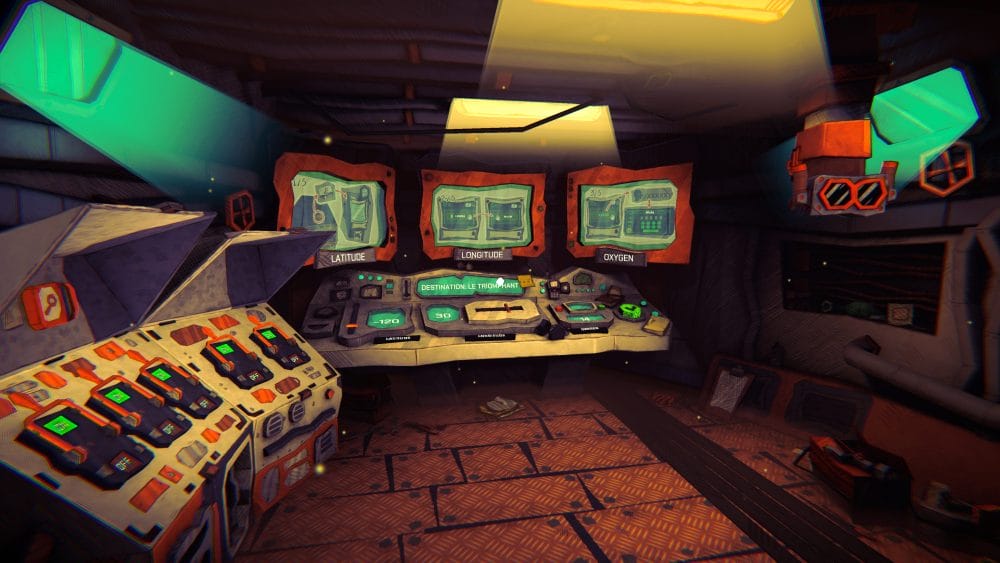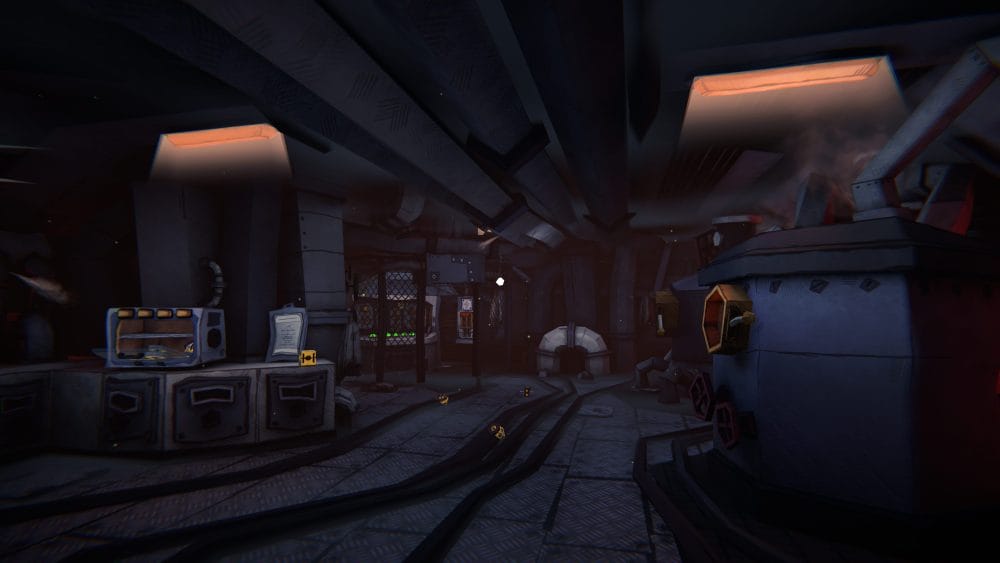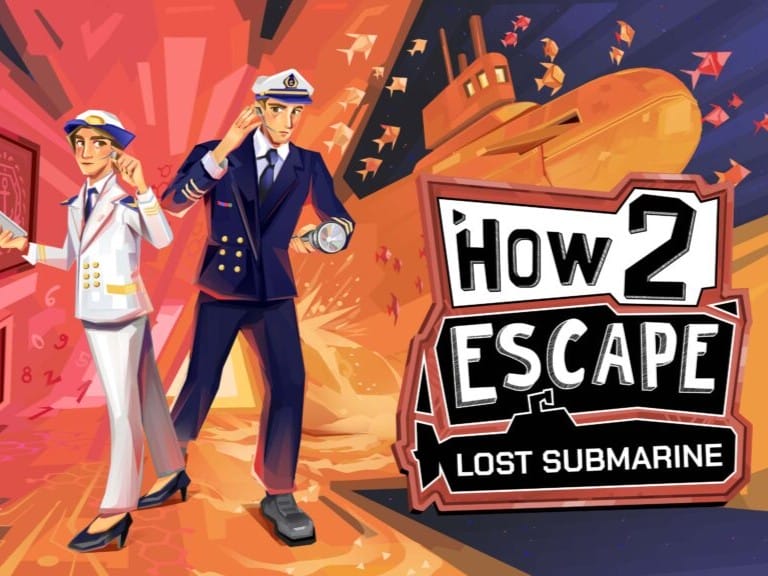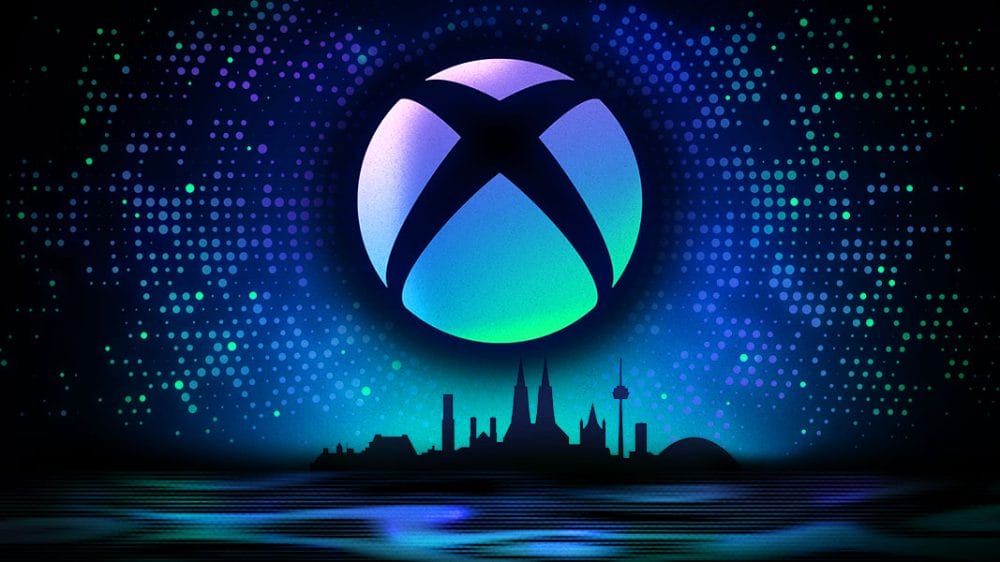I love an escape room. Like my best friends and I had the escape record for at least two in Glasgow at once. I’m also incredibly bad at explaining things. When I’m in a room that’s not too bad, because I can point out the things I mean, but for purely audio explanations it can definitely be an issue. Bearing that in mind, big thank you to Harry our Guides Editor for translating my gibberish in How 2 Escape: Lost Submarine.
Split Screen Puzzling
How 2 Escape: Lost Submarine is a clever little asymmetrical co-op puzzler that builds on the foundations laid by its predecessor while plunging players into the depths of a claustrophobic undersea thriller. It’s a short but sharp experience that’ll appeal to anyone who enjoys communication-based challenges and puzzle games.


Set aboard a doomed submarine, the game splits the action between two players on different devices. One takes the role of the trapped character on console (or PC), navigating a series of rooms filled with cryptic machinery, flickering control panels, and escape mechanisms. The other player, on a mobile device, acts as their lifeline: receiving crucial info, deciphering clues, and relaying instructions on how to proceed. This second screen dynamic isn’t just a gimmick – it’s the key to making the game so unique. Each player has a completely different interface, clues and puzzles to communicate, and if like us you were in two completely different houses there’s no way to brute force them or have a quick peek at the other screen.
Team Work Makes the Dream Work
The console side is all about exploration. You’re thrust into the shoes of the submarine’s unlucky occupant, and you’ll need to be on the lookout for hints, codex’s and things to interact with. There’s no hand-holding here. You need to study equipment layouts, piece together subtle environmental hints, and interact with various systems that aren’t immediately intuitive. Time pressure builds with each new challenge – oxygen levels, flooding threats, and mechanical failures all add urgency.

Contrast that with the mobile experience, and you’ve got a completely different game – one centred on interpretation and communication. Your mobile screen is set up like computer, with each room having it’s own documents, encrypted messages, and maintenance records. You’ll need to talk through instructions while your partner carries them out, or figure out morse code messages by tweaking a comms device you can’t see. It’s like being the mission control operator guiding a crewmate through disaster. And while you’re removed from the tension of the sub itself, the pressure to interpret and relay quickly is very real – especially when your console partner is panicking about a flooding bulkhead.

What makes “Lost Submarine” work is its commitment to making both roles meaningful. Plenty of asymmetrical games end up giving one player all the fun while relegating the other to glorified note-taking. Not here. Both sides demand engagement, and both players constantly rely on each other. The puzzles are varied and well-paced, often requiring multi-step solutions that unfold across both screens. There’s a real sense of accomplishment when a particularly tricky section is conquered, not just from solving the puzzle, but from having done it together.

The visual and audio design plays its part too. On console, the sub is dark, rusted, and atmospheric. Warning sirens wail, pipes hiss, and the pressure of being deep underwater is palpable. Meanwhile, the mobile interface is sleek and functional, resembling something between an engineer’s toolkit and a spy’s tablet. The difference in tone between the two platforms adds to the tension: one feels like a survival mission, the other like a cerebral decoding challenge.
What’s Going On Here?
There are a few rough edges. Navigation within the submarine can occasionally feel fiddly, especially when trying to manipulate 3D objects under time pressure. And the mobile interface, while generally intuitive, can sometimes bombard you with info dumps that take a moment to parse. You also need to exit all the way out of things quite frequently which can make navigating it a little annoying.
There were also a few puzzles that didn’t feel so great. In particular there’s one that asks you to decode a graphical language of sorts, but one of the steps seemed to use completely different logic than any of the other steps. We ended up having to use a hint for it, and when it was explained it still didn’t seem to make any sense.

Replayability is okay, but you may want to team up with another friend to try it out for a second time (and maybe give it a little while so everything isn’t too fresh in your mind). While the core narrative is fairly linear, many puzzles allow for alternate paths or solutions depending on your team’s approach. There’s also some different endings on offer, and obviously the opportunity to play from the other perspective.
Final Thoughts
Ultimately, How 2 Escape: Lost Submarine isn’t trying to be a blockbuster title. It’s tight, focused, and unapologetically niche. But it succeeds at what it sets out to do: deliver an intense, collaborative escape-room experience across two very different platforms. Whether you’re the one piecing together circuit boards in the dark or decoding pressure systems from afar, the feeling of shared triumph when you finally break free is undeniable.
If you and a friend are up for something that tests both your brains and your ability to work as a team under pressure, this submarine might be worth sinking a couple of hours into. And don’t worry, Harry and I didn’t have a falling out during it.

How 2 Escape: Lost Submarine was reviewed on Xbox Series X with the use of a Google Pixel 8 as the paired mobile device. Gamer Social Club would like to thank the developers and publisher for the code.
How 2 Escape: Lost Submarine released on the 24th of June on PC, Xbox Series X/S , Playstation 4/5 and Nintendo Switch.





